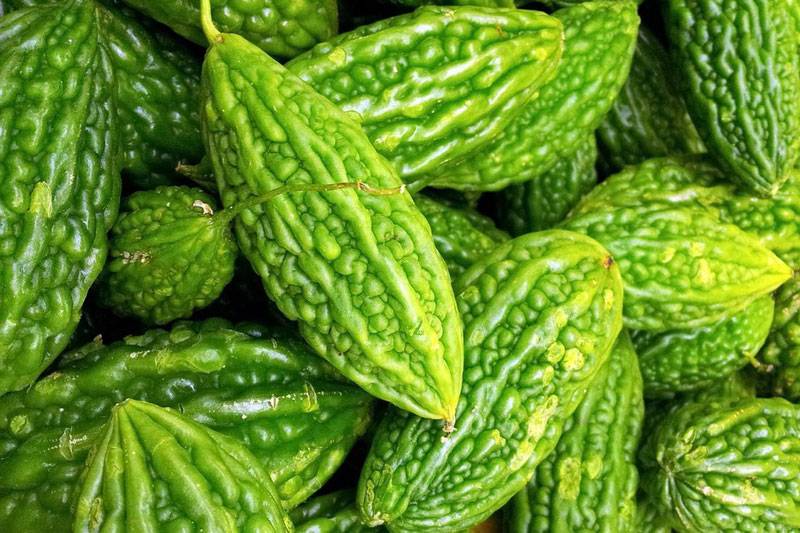Crops
Bitter Gourd

Bitter Gourd
Bitter gourd (Momordica charantia), also known as bitter melon, is believed to have originated in tropical regions of Africa and Asia. It is widely grown in tropical and subtropical areas, where it is valued for its medicinal and culinary uses.
Global Area and Production
Bitter gourd is cultivated in countries like India, China, the Philippines, and tropical parts of Africa. India is the largest producer of bitter gourd, where it is a popular vegetable in many regional cuisines. The total global area under bitter gourd cultivation is relatively small compared to other vegetables, but it is growing due to its increasing health benefits.
Uses of Bitter Gourd
- Culinary: Bitter gourd is commonly used in stir-fries, curries, and stuffed preparations. Its distinctive bitter flavor is appreciated in many Asian cuisines.
- Medicinal: Bitter gourd is known for its medicinal properties. It is widely used in traditional medicine for managing diabetes, improving digestion, and boosting immunity due to its high content of vitamins C and A, and compounds like charantin and polypeptide-p.
- Nutritional Value: Bitter gourd is low in calories and rich in fiber, making it an excellent addition to a healthy diet.
Bitter Gourd Cultivation in India
Major Producing States
The main bitter gourd-producing states in India include Uttar Pradesh, Bihar, West Bengal, Odisha, and Andhra Pradesh. The crop is grown throughout the country, with peak production during the summer and monsoon seasons.
Climate Requirements
- Temperature: Bitter gourd thrives in warm, humid climates, with an ideal temperature range of 25-35°C. It is sensitive to frost and requires a long warm growing season.
- Rainfall: The crop requires moderate rainfall, around 600-800 mm, and well-distributed moisture during its growing period. Irrigation is beneficial in areas with insufficient rainfall.
Soil Requirements
Bitter gourd prefers well-drained sandy loam or loamy soils rich in organic matter. The ideal soil pH for its cultivation is between 6.0 and 7.0. Good drainage is crucial, as waterlogging can damage the roots and stunt the plant’s growth.
Blog
Explore Our Blog
About Us
Welcome to Agriplaza
Welcome to Agriplaza. India's first and only comprehensive digital platform dedicated to agriculture and farmers. Explore widest range of related data our figures speaks a lot.
738056
Visitors
239
Diseases
131
Pests




